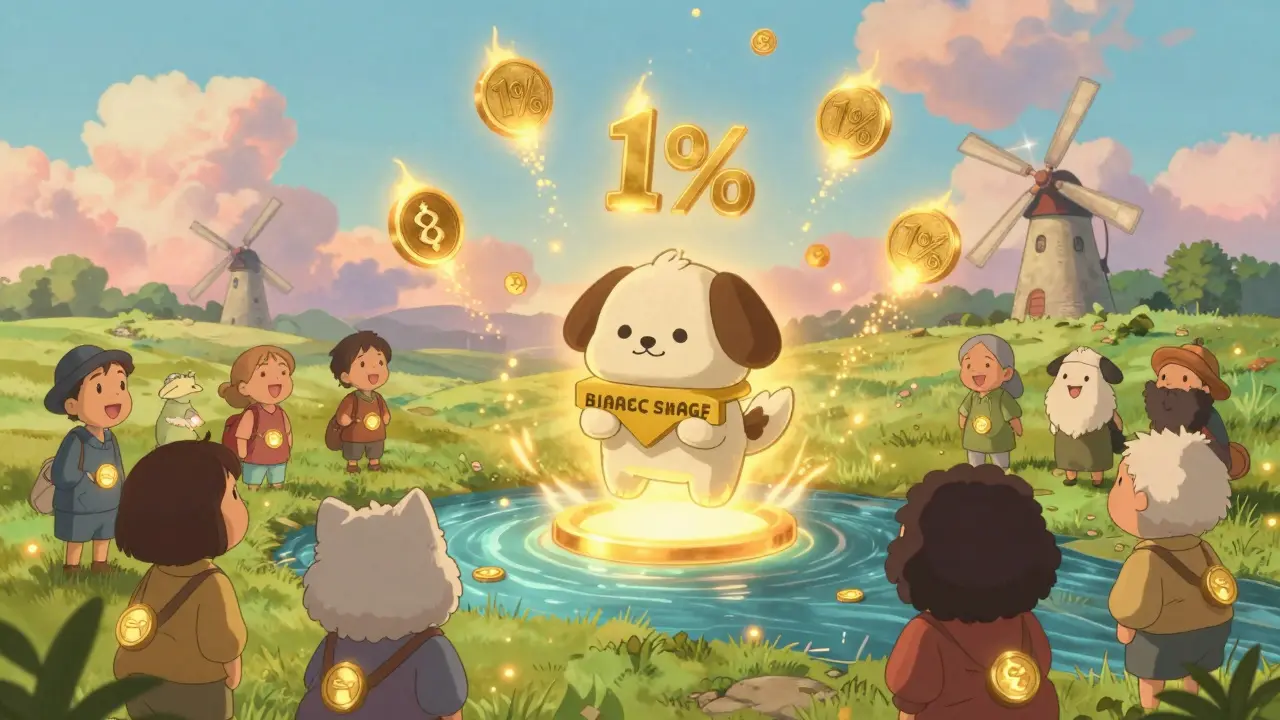UniLend Finance Earnings Calculator
Estimate your potential earnings from lending ERC-20 tokens on UniLend Finance with UFT rewards.
Key Takeaways
- UniLend Finance is a permission‑less DeFi protocol on Ethereum that lets you lend, borrow and trade any ERC‑20 token.
- The native UFT token powers governance, fee discounts and liquidity incentives.
- Over 9,000 assets can be listed without any central approval, thanks to isolated dual asset pools.
- UFT’s price sits around $0.004 as of September2025, down from a $4.47 peak in early2021.
- Token holders vote on‑chain via UniLend Governance and off‑chain via Snapshot.
When you hear the name UniLend Finance is a permissionless decentralized finance (DeFi) protocol built on the Ethereum blockchain that combines lending, borrowing and spot trading for any ERC‑20 token, the first question is usually: what does it actually do? The short answer is simple - it opens up the whole ERC‑20 world to the same suite of financial services that only a handful of big‑ticket tokens enjoy on platforms like Aave or Compound.Founded in 2020 by Chandresh Aharwar (former Matic Network engineer turned DeFi entrepreneur together with Tarun Malik and Suryansh Kumar, UniLend set out to fix a glaring limitation: most DeFi protocols only support a curated list of popular assets, leaving thousands of newer tokens stranded.
How UniLend Works: From Permissionless Listing to Isolated Pools
The engine behind UniLend is twofold. First, the protocol uses a permissionless listing (a mechanism that allows any ERC‑20 token to be added to the platform without a central gatekeeper). When a developer creates a new ERC‑20 token, they can instantly enable lending, borrowing and spot trading for it on UniLend simply by deploying the required smart‑contract pair.
Second, each token pair lives in an isolated dual asset pool (a structure that separates risk between different asset pairs, preventing a shock in one market from contaminating another). This isolation is crucial because it means a collapse of a low‑liquidity token won’t drain the liquidity of other, more stable pools.
Beyond the core money market, UniLend also offers:
- Spot trading - trade any listed ERC‑20 token directly on the platform.
- Flash loans - borrow assets without collateral for a single transaction, useful for arbitrage or liquidation bots.
- Liquidity mining - earn UFT token rewards and a share of the trading fees for providing capital.
UFT Tokenomics and Market Snapshot (Sept2025)
The UFT token (UniLend’s native utility and governance token) serves three main purposes:
- Governance - holders vote on protocol upgrades, loan‑to‑value ratios and oracle sources.
- Fee discounts - staking UFT reduces trading and borrowing fees.
- Incentives - liquidity providers earn UFT in addition to fee revenue.
Key numbers (as of 30Sept2025):
- Total supply: 100million UFT
- Circulating supply: 91.67million UFT
- Current price: $0.004001 (≈‑2.45% 24‑hr change)
- Market cap: $366,785
- Fully diluted valuation: $400,119
- 24‑hour volume: $48,941 (‑8.29%)
- All‑time high: $4.47 (23Feb2021)
- All‑time low: $0.0044 (17Jun2025)
The price journey shows extreme volatility - a jump from a few cents to over four dollars in less than a year, then back down to a fraction of a cent. While that may spook risk‑averse investors, it also hints at upside potential if the protocol can attract more users.
Governance: On‑Chain Voting and Snapshot
UniLend’s decision‑making is deliberately community‑centric. Token holders can delegate their UFT to a proxy address and vote on‑chain through the UniLend Governance contract. For gas‑free participation, the protocol mirrors proposals on Snapshot (an off‑chain voting platform that records votes without transaction fees). Proposals range from tweaking loan‑to‑value ratios to adding new price oracle feeds.
Because voting power is tied to token holdings, large whales have influence, but the delegation system lets smaller holders pool their votes behind trusted community members, balancing power distribution.

Risks and Challenges
Even with its technical edge, UniLend faces a few headwinds:
- Oracle reliability - listing any ERC‑20 token means the protocol must source trustworthy price feeds for assets that may have thin markets.
- Risk assessment - the sheer number of supported tokens makes it harder to evaluate collateral quality, raising liquidation risk.
- User acquisition - competing against established platforms with deeper liquidity pools can limit volume, as reflected in the modest $48k daily trades.
- Security - more assets mean a larger attack surface; any smart‑contract bug could affect dozens of pools simultaneously.
Developers are actively working on AI‑driven risk models and tighter oracle aggregation to mitigate these concerns.
UniLend vs. Other DeFi Money Markets
| Feature | UniLend | Aave | Compound |
|---|---|---|---|
| Permissionless token listing | Yes (any ERC‑20) | No (curated whitelist) | No (curated whitelist) |
| Integrated spot trading | Yes | No | No |
| Isolated dual‑asset pools | Yes | No (shared risk across markets) | No (shared risk) |
| Flash loans | Yes | Yes | Yes |
| Governance token | UFT | AAVE | COMP |
| Current TVL (approx.) | $30M | $30B | $15B |
UniLend’s niche is clear: if you need DeFi services for a brand‑new or low‑profile token, it’s the go‑to platform. For big‑ticket assets with massive liquidity, Aave and Compound still dominate.
Getting Started: A Quick 5‑Step Checklist
- Set up an Ethereum wallet (MetaMask, Trust Wallet, etc.) and fund it with ETH for gas.
- Connect to UniLend by visiting app.unilend.finance and clicking “Connect Wallet”.
- Supply liquidity - choose any ERC‑20 token, enter the amount, and confirm the transaction.
- Earn UFT - enable the “Earn UFT” toggle to start receiving governance token rewards.
- Borrow or trade - once you have collateral, you can borrow other tokens or use the spot‑trade tab to swap directly.
Remember to keep an eye on the loan‑to‑value ratio of your collateral; crossing the liquidation threshold will trigger automatic repayment using your deposited assets.
Future Outlook
UniLend is already expanding beyond pure DeFi. The roadmap mentions “democratizing AI and blockchain” services, hinting at future layers where AI‑driven risk scoring or decentralized data markets could sit on top of the existing money market. If those plans materialize, the utility of UFT could increase, potentially spurring a price rebound.
For now, the protocol’s success hinges on three factors: attracting users who need access to obscure tokens, maintaining robust oracle feeds, and proving that isolated pools truly insulate risk during market stress. Watch the TVL and daily volume metrics - steady growth there would be the strongest signal that UniLend is moving past the niche stage.
Frequently Asked Questions
What makes UniLend different from Aave?
UniLend’s biggest distinction is its permissionless token listing. While Aave only supports a curated set of assets, UniLend lets any ERC‑20 token be used for lending, borrowing or spot trading without a central approval process.
How can I earn UFT tokens?
Provide liquidity to any asset pool and enable the “Earn UFT” option. You’ll receive a share of the trading fees plus a proportion of newly minted UFT based on the pool’s size.
Is UniLend safe for new users?
The protocol’s smart contracts have been audited, but the broad asset coverage means some tokens may have unreliable price feeds. Start with well‑known assets and keep your loan‑to‑value ratio below 50% to stay safe.
What is a flash loan on UniLend?
A flash loan lets you borrow any amount of an asset without posting collateral, as long as you repay it within the same transaction. It’s useful for arbitrage, liquidations, or complex DeFi strategies.
How does governance work?
UFT holders can vote directly on‑chain through the UniLend Governance contract or delegate their voting power to a trusted address. Proposals are also posted on Snapshot for gas‑free voting.









Oreoluwa Towoju
April 16, 2025 AT 05:55UniLend’s permission‑less design really opens the door for smaller tokens to get the same lending options as big players. It’s a solid step toward a more inclusive DeFi ecosystem.
Jason Brittin
April 17, 2025 AT 02:33Wow, another protocol that promises “everything” – lending, borrowing, spot trading – all in one place. 🙄 Guess we’ll just add it to the pile of “must‑try” projects.
Kate Nicholls
April 17, 2025 AT 23:11Honestly, the hype around UFT feels overblown. The token price is basically a ghost of its 2021 peak, and the actual utility of the governance token is still fuzzy.
Carl Robertson
April 18, 2025 AT 19:50Can we talk about how UniLend is basically the wild west of DeFi? One minute you’re earning sweet APRs, the next you’re watching an exploit wipe out the pool. It’s exhilarating and terrifying all at once.
Amie Wilensky
April 19, 2025 AT 16:28UniLend Finance is built on Ethereum and leverages the ERC‑20 standard to let users lend, borrow, and trade any token without needing approval.
The protocol uses isolated dual asset pools, which means each market has its own liquidity and risk parameters, reducing contagion between assets.
Because of this design, over 9,000 tokens can be listed automatically, giving tiny projects access to the same financial services that big DeFi protocols offer.
The native token, UFT, serves three main purposes: governance voting, fee discounts, and liquidity mining rewards.
Holders can participate in on‑chain governance proposals, shaping everything from risk parameters to new feature rollouts.
Fee discounts are applied when you pay transaction fees with UFT, effectively lowering your cost of borrowing or trading.
Liquidity mining distributes additional UFT tokens to lenders, creating an extra layer of incentive on top of the base APR.
However, the token’s price volatility is significant; it fell from a $4.47 peak in early 2021 to around $0.004 in September 2025.
This price swing can make the reward side of the equation feel like a gamble, especially if you’re counting on UFT price appreciation.
The protocol’s permission‑less nature also means there’s less vetting of listed assets, which could expose users to malicious or poorly designed tokens.
Risk management relies heavily on the isolated pool mechanism and the community’s willingness to vote on risk parameters, so active participation is essential.
For borrowers, the ability to use any ERC‑20 token as collateral expands opportunities but also raises questions about collateral valuation methods.
UniLend integrates with popular DeFi aggregators, allowing for seamless swaps and arbitrage opportunities within the same interface.
From a user experience standpoint, the platform’s UI is still catching up, and some features feel a bit rough around the edges.
Overall, UniLend offers a compelling vision of a truly open DeFi market, but investors should weigh the reward potential against the inherent risks of a largely unregulated ecosystem.
Lindsay Miller
April 20, 2025 AT 13:06Good points on the risk side – staying active in governance is the only way to keep the system safe.
VICKIE MALBRUE
April 21, 2025 AT 09:45Looks promising if you like DeFi experiments.
Waynne Kilian
April 22, 2025 AT 06:23While UniLend’s ambition is impressive, it’s also a reminder that the DeFi space still needs better standards for token vetting. Collaboration across projects could help mitigate some of those wild‑west vibes.
Naomi Snelling
April 23, 2025 AT 03:01Everyone talks about “permission‑less” like it’s a badge of honor, but that just means anyone can slip in a malicious contract and we’ll be the ones picking up the pieces.
april harper
April 23, 2025 AT 23:40In the grand theater of crypto, UniLend plays the role of the trickster – offering boundless possibilities while quietly asking us to trust the unknown.